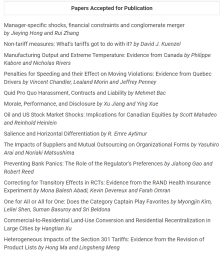近日,我院徐航天教授的独作论文“Commercial-to-residential land-use conversion and residential recentralization in large cities”被《Canadian Journal of Economics》录用。该文针对近二十年美国、日本等发达国家大城市的居住人口从“郊区化”转变为“回归中心城区”的现象,首次基于宏观经济预期变化和土地的商业-居住用途转换,从住宅供给的角度提供了解释,区别于已有文献聚焦于居住需求的变化。《Canadian Journal of Economics》是由加拿大经济学会主办的综合性经济学期刊,在经济学界享有良好的声誉和广泛的认可度,是经贸学院院定A2权威期刊。


摘要:We examine the long-term impact of a real estate bubble on the land-use patterns of Tokyo and Osaka from 1980 to 2003 and find that fluctuations in land prices reflected changing demand for commercial land relative to that for residential land, which, in turn, affected housing supply and residential location choices. During the real estate bubble, land developers favored commercial over residential development because the perceived productive value of commercial land increased sharply. Thus, daytime population in central cities increased and residential population fell. During the economic downturn, however, the demand for commercial space fell, houses were favored by land developers and residents were recentralized. Our causal estimates show that the commercial-to-residential land-use conversion can explain approximately 9-16% of the housing starts after the bubble burst in Tokyo and Osaka, and their populations would have been reduced by 2-3% otherwise. The effect is more prominent in their central business districts. Our findings provide a novel explanation for the recent changes in central neighborhoods.